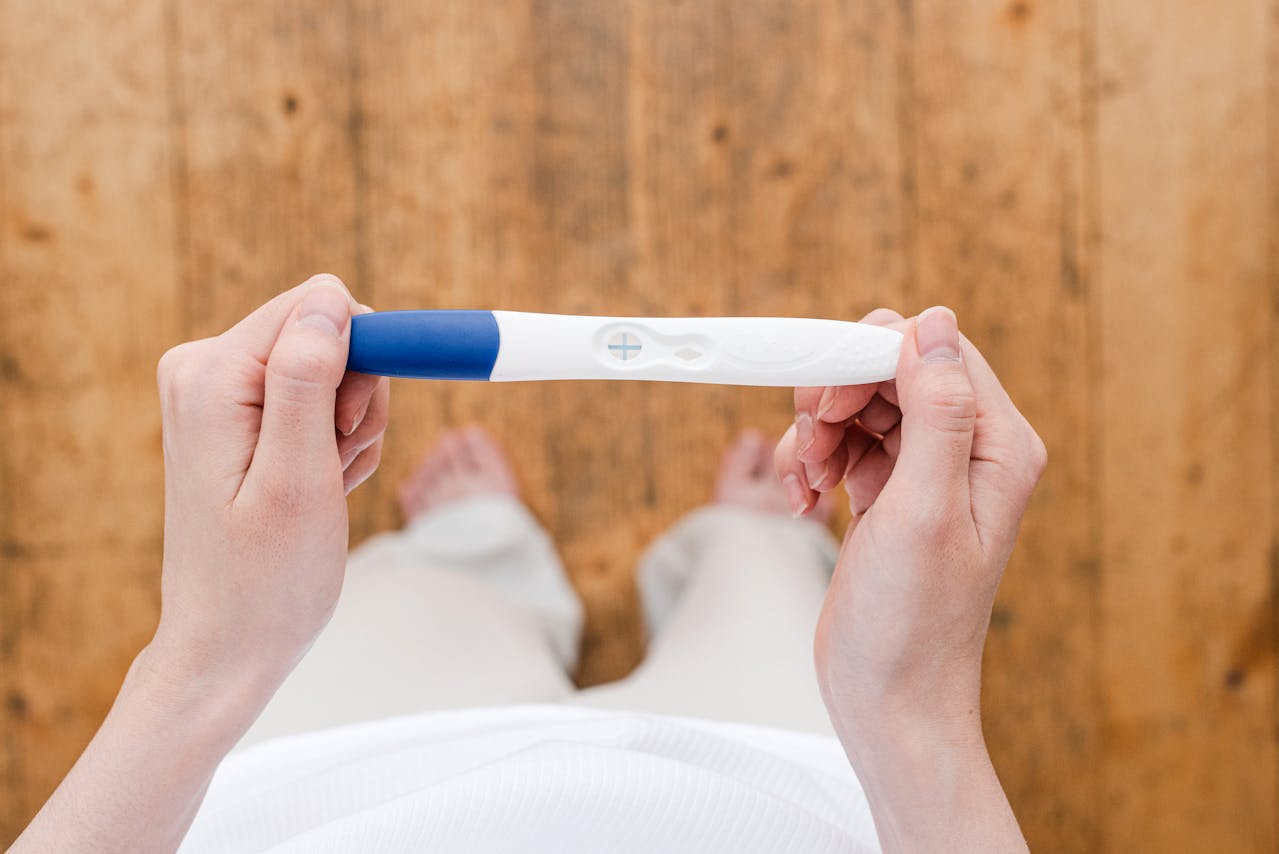23 DPO: Symptoms, hCG levels & pregnancy test accuracy

Learn what 23 days post ovulation (23 DPO) means, common early pregnancy symptoms, expected hCG levels, and how to interpret positive or negative pregnancy tests at this stage.
Days post ovulation refers to the number of days that have passed since you ovulated.
Ovulation marks the fertile window, and if sperm meets the egg, fertilization occurs usually within 24 hours. The fertilized egg (zygote) then travels down the fallopian tube toward the uterus, where it implants about 6–10 days after ovulation.
Once implantation occurs, specialized cells of the developing placenta begin producing human chorionic gonadotropin (hCG). The hormone that supports the uterine lining and also signals the body to stop menstruation.
By 23 DPO, implantation has long been completed, and your body should either:
- Be steadily producing hCG to support an early pregnancy, or
- Preparing to shed the uterine lining if pregnancy did not occur.
{{button}}
23 DPO Symptoms You Might Experience
By 23 DPO, many early pregnancy symptoms have either started or are about to start. However, most times, premenstrual syndrome and early pregnancy symptoms often overlap.
Some of the symptoms you might experience 23 DPO are:
1. Fatigue
This is due to increased progesterone and increased metabolism, which can cause exhaustion.
2. Breast tenderness or fullness
Hormonal fluctuations make breast tissue sensitive and feel heavier.
3. Nausea or food aversions
Morning sickness usually begins around week 5, although not everyone experiences this. Certain foods also begins to cause irritation or nausea.
4. Mild cramping and contraction
Uterine cramping or contraction occurs especially when implantation has occurred and the uterus begins to expand slightly.
5. Frequent urination
Early hormonal changes affect kidney blood flow. Also, increased pressure on the bladder from the enlarging uterus can cause frequent urination.
6. Mood swings
Estrogen and progesterone fluctuations affect emotions.
7. Missed periods
If your period is regular, a missed period can be a reliable sign of pregnancy.
If you are not pregnant, it can be that there was delayed ovulation and hence menstruation.
You might have signs of premenstrual syndrome like:
- Cramps
- Breast tenderness,
- Fatigue
- Spotting or brown discharge may precede a delayed period.
However, if there is
- Heavy bleeding
- Sharp or severe lower abdominal pain
- Severe dizziness, fainting, or signs of internal bleeding
- Symptoms inconsistent with typical menstruation (e.g., worsening pain, prolonged bleeding), it's necessary you consult your doctor.
23 DPO Pregnancy Test
By 23 DPO, a home pregnancy test should, in most cases, give a reliable result.
How pregnancy tests work:
Home pregnancy tests detect hCG in your urine. After implantation, hCG levels double roughly every 24 hours. Most commercial tests can detect hCG concentrations of 20–25 mIU/mL
Because 23 DPO is about 13–17 days after implantation, hCG levels if you are pregnant should be easily detectable.
Best ways for results
1. Morning testing: Use your first-morning urine when hCG concentration is highest.
2. Avoid excessive fluids: Overhydration can dilute urine and lower hCG concentration.
3. Check test sensitivity: Not all tests are equally sensitive; some digital brands require higher hCG levels.
A clear positive result at 23 DPO confirms pregnancy.
At this stage, your hCG levels might range anywhere from 18–7,340mIU/mL.
23 DPO Negative Pregnancy Test
A 23 DPO negative pregnancy test can be confusing, especially if your period doesn't start. Although most negative tests this far along mean that you are not pregnant, there are some other possibilities.
Possible reasons for a negative result:
1. Delayed ovulation
If you have ovulated later than normal, implantation may have just occurred, and hCG has not risen sufficiently to be detected yet.
2. Slow rise in hCG
In some pregnancies, hCG rises slowly. Pregnancy may be detected by blood test when urine tests are negative.
3. Chemical pregnancy (very early miscarriage)
A fertilized egg may implant briefly but stop developing. hCG levels start to rise, then fall before a positive test is captured.
4. Faulty or expired test kit
Always check the expiration date and follow instructions carefully.
5. Diluted urine sample
Testing after heavy fluid intake can lower hCG concentration below the test’s instrument detection threshold.
What to do next
1. Wait two or three days and repeat the test using first-morning urine.
2. If your period has not come and symptoms continue, request a quantitative blood hCG test from your physician.
If the test remains negative and menstruation fails to start after sometime, hormonal examinations may be needed to rule out any other abnormalities.
What is hCG?
Human chorionic gonadotropin (hCG) is a hormone secreted by cells that form the placenta. It supports the corpus luteum, keeping progesterone high to preserve the uterine lining.
What are hCG ranges?
By 23 DPO, your pregnancy corresponds roughly to five weeks gestation. hCG levels can vary among individuals.
According to Cleverclinic, some ranges are:
A slow rise or plateau may indicate an early loss or ectopic pregnancy.
A very high hCG could suggest a multiple pregnancy (twins) or miscalculated pregnancy date.
If you have a positive result, your doctor can ask for serial blood tests to check that hCG is increasing normally.
When to Consult a Doctor
At 23 DPO, you should contact your healthcare provider if
1. Your period is more than a week late and tests are still negative.
2. You are experiencing strong symptoms of pregnancy but uncertain test results.
3. You experience severe cramping, spotting, or pain.
4. You want early confirmation.
Summary
At 23 days post ovulation, most pregnancies are detectable with standard home pregnancy tests. A positive result at this point strongly indicates pregnancy, while a negative one usually means no conception occurred although late implantation and hormonal factors can occasionally delay detection.
Symptoms, hCG levels, and cycle timing together are more reliable than any single test result. If there is uncertainty in results, you might take a blood hCG test and other medical examinations to ascertain what’s really happening.
{{pink-banner}}








.avif)
